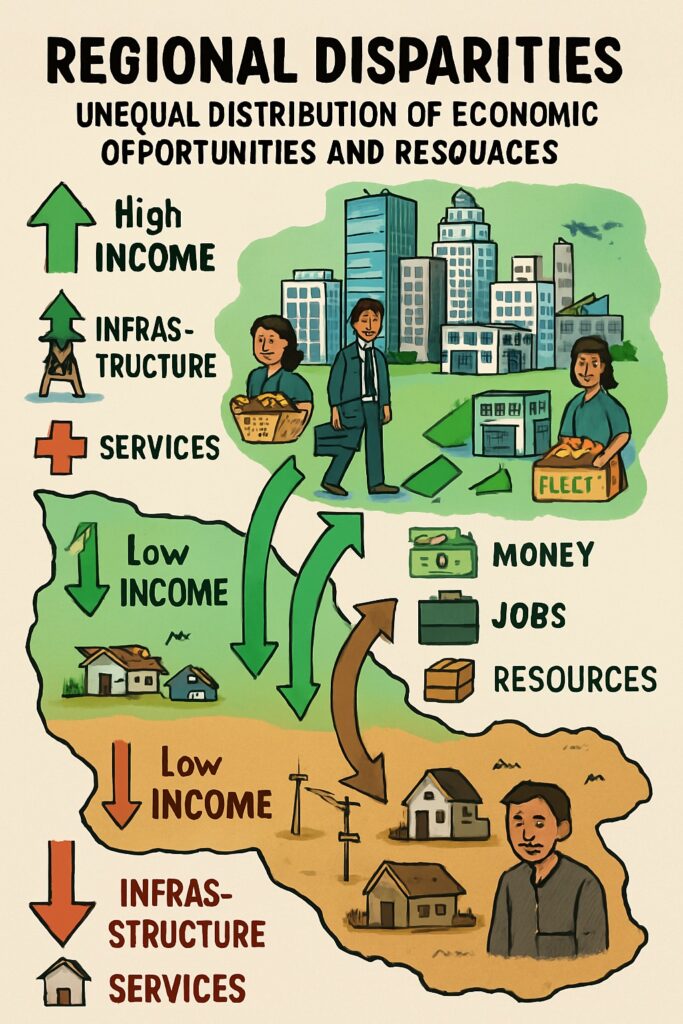Regional disparities refer to the unequal distribution of economic opportunities and resources across different regions of a country. In many countries, including India, there are significant disparities in terms of income, employment, education, and other indicators of economic development between different regions.

Table of Contents
Causes of Regional Disparities in Economic Development
- Geographical Factors: Geographical factors, such as the location of natural resources, can play a role in causing regional disparities in economic development. For example, regions with abundant natural resources, such as minerals or oil, are often more economically developed than regions without these resources.
- Infrastructure: The lack of infrastructure, such as roads, transportation, and communication networks, can also contribute to regional disparities in economic development. This makes it difficult for businesses to operate and for individuals to access employment opportunities in certain regions.
- Education and Skills: Education and skills are also important factors that contribute to regional disparities in economic development. Regions with higher levels of education and a well-skilled workforce are more likely to have a strong and growing economy, while regions with lower levels of education and a poorly-skilled workforce are more likely to have a weaker economy.
Challenges of Regional Disparities in Economic Development
- Income Inequality: Regional disparities in economic development can lead to income inequality. This means that individuals in economically developed regions are likely to have higher incomes, while individuals in economically underdeveloped regions are likely to have lower incomes.
- Unemployment: Regional disparities in economic development can also lead to higher levels of unemployment in underdeveloped regions. This can be due to a lack of job opportunities and the inability of individuals in these regions to access employment in other regions.
- Poverty: Regional disparities in economic development can also contribute to poverty. This is because individuals in underdeveloped regions are more likely to live in poverty, due to lower levels of income and employment opportunities.
Solutions to Regional Disparities in Economic Development
- Investing in Infrastructure: Investing in infrastructure is a key solution to addressing regional disparities in economic development. This includes building roads, transportation networks, and communication networks, which can help to connect underdeveloped regions with the rest of the country and make it easier for businesses to operate and for individuals to access employment opportunities.
- Improving Education and Skills: Improving education and skills is another important solution to regional disparities in economic development. This includes investing in education and training programs, which can help to build a well-skilled workforce in underdeveloped regions and increase their ability to participate in the economy.
- Promoting Regional Integration: Promoting regional integration is another solution to regional disparities in economic development. This includes policies that encourage trade and investment between regions, which can help to create jobs and increase economic opportunities in underdeveloped regions.
Conclusion
In conclusion, regional disparities in economic development are a significant challenge that must be addressed in order to ensure long-term prosperity for all. By investing in infrastructure, improving education and skills, and promoting regional integration, we can help to reduce these disparities and create a more equitable distribution of economic opportunities and resources.
Read: Geography Notes